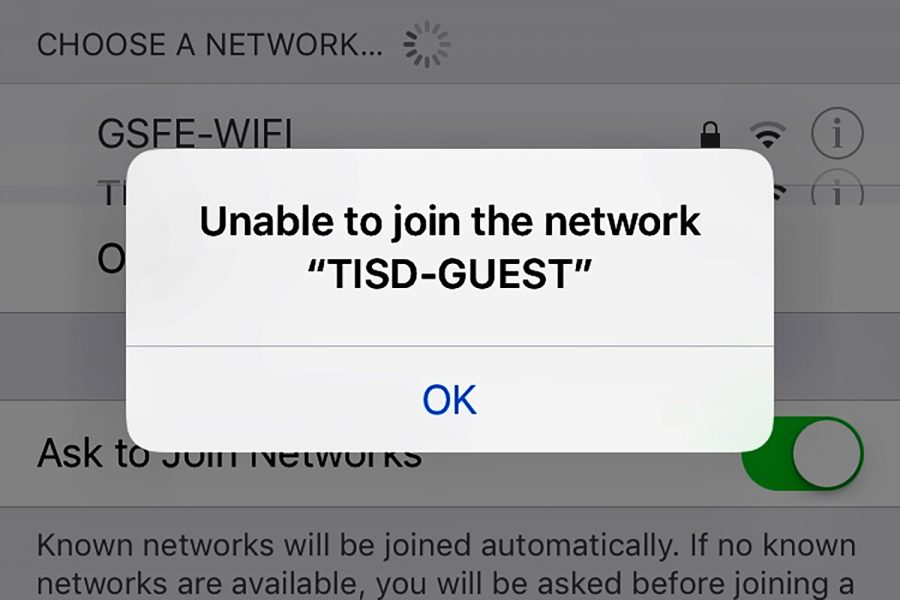A lost connection
Administration ends Wi-Fi access to students
Students are no longer allowed access to the internet through the STUDENT-NET WiFI. This decision materialized after discussion about the amount of bandwidth being used for non-instructional purposes.
August 12, 2018
UPDATED – With the 2018-19 school year right around the corner, administration has decided to discontinue Internet access to students through the STUDENT-NET Wi-Fi. The decision comes after TISD officials discovered that student uses of the bandwidth for non-educational purposes was competing with technology in the classroom.
“We have a limited amount of bandwidth for the district and for our campus,” principal Carla Dupree said. “When students would use their phones, our bandwidth would go down because of the streaming of [media] and the use of websites not for instructional purposes. It was limiting what we could do with instructional technology because of [excessive] recreational use.”
From one teacher’s perspective, the practicality of technology is dependent on Internet access. Students were able to access the Wi-Fi for classroom use during the previous school year, but now that privilege is lost.
“The decision definitely placing students on an imbalance field, I think it’s a level like where, where when we had the Wi-Fi, everybody had equal access to research internet and so forth,” debate teacher Amy Kemp said. “But again, I can see the other side in that too much bandwidth was being used for Netflix and other applications.”
On the other hand, other teachers believe that the situation will improve the learning environment.
“I feel like it is a good thing,” Upchurch said. “Perhaps when you have students more focused in their learning, and when teachers don’t have to spend as much time trying to deal with the cell phone issue, you can involve more students in the learning process than before.”
Students are divided on the issue depending on their view of how resources such as cellular data and classroom technology will be available and reliable.
“I have mixed feelings because some students who don’t have sufficient cellular data can’t use phones in educational purposes,” senior Alex Cannon said. “On the other hand, the network was being abused and this made it difficult to complete online homework assignments during designated working times.”
Smartphones will still be allowed in the classroom at certain times for educational use if the user is willing or able to use cellular data for classroom activities such as “Kahoot!” if other technology is not available.
“[Students] can still be on their phone if they have data and at the appropriate times,” Dupree said. “However, a lot of the things that is instructional that [a student] could use on their phone can also be used on a Chromebook as well, so we are trying to help bridge that gap.”






















John • Aug 13, 2018 at 3:33 am
You know, there is a way to block those site from being accessed. If you had any decent tech personnel on staff they’d be able to set that up. My last employer had their network set up that way. You should look into that avenue. You also re-route the networks DNS through Google or Cloud-flare to increase speeds as well.
Kanye • Aug 12, 2018 at 8:54 pm
Bruh